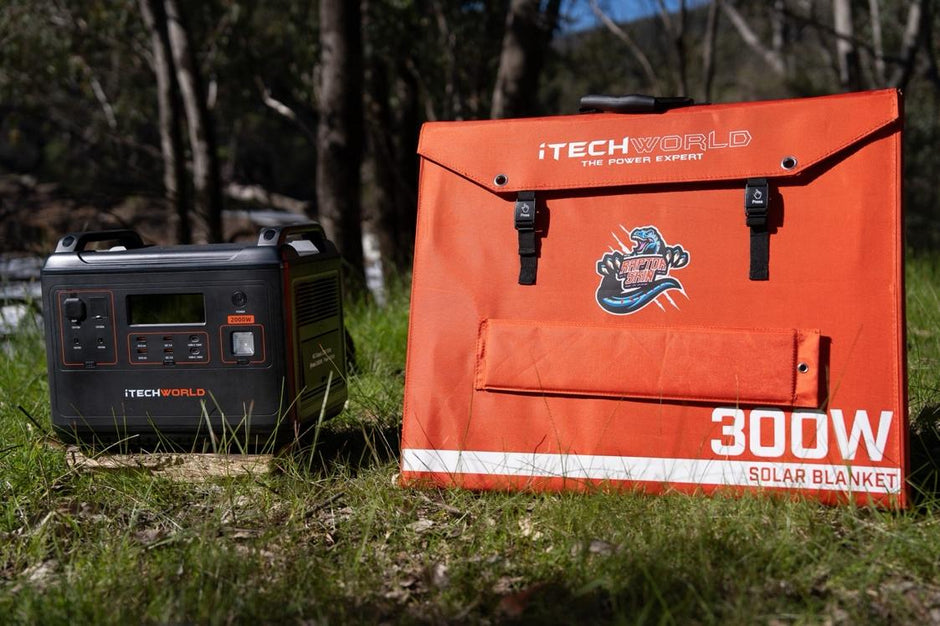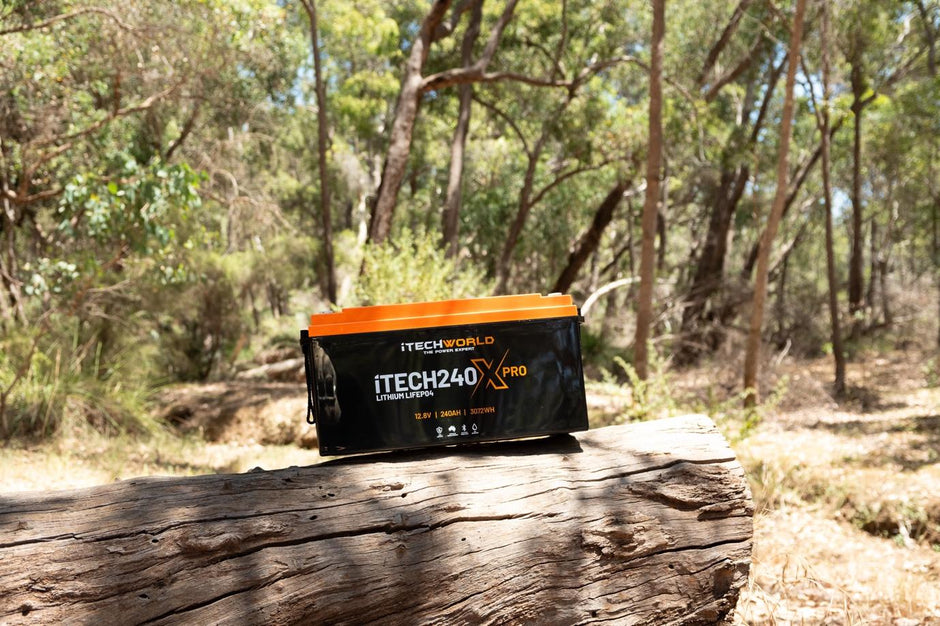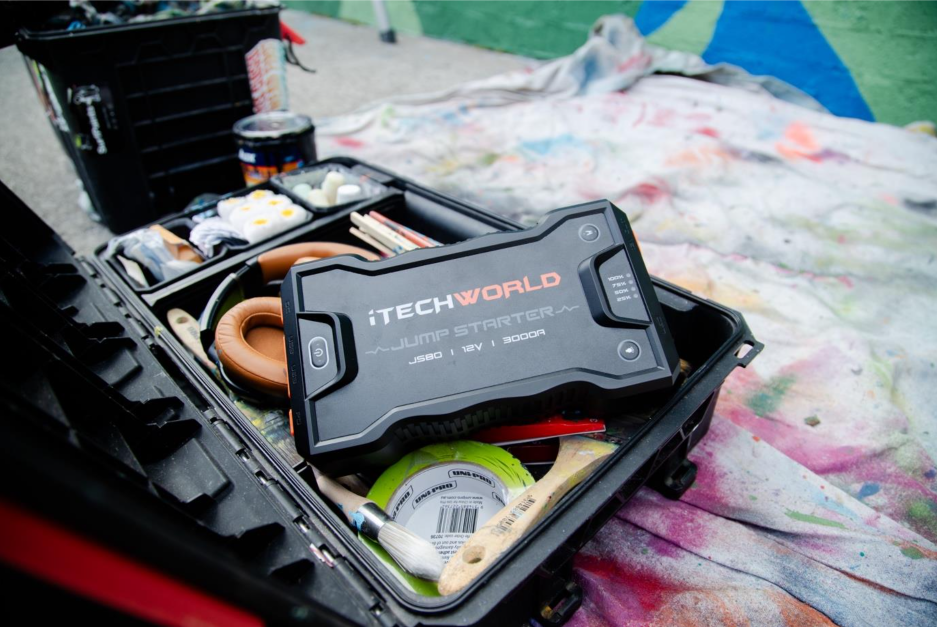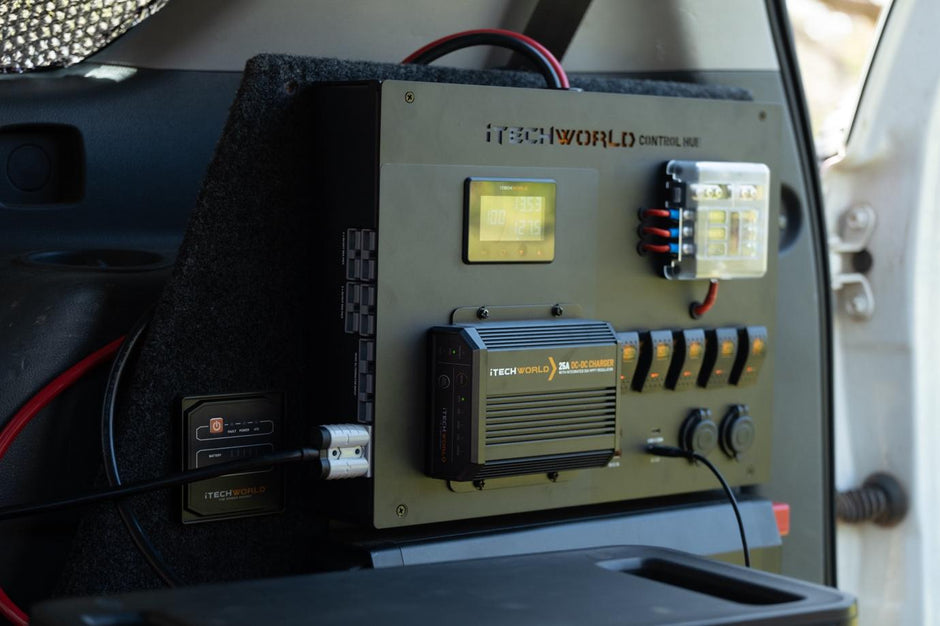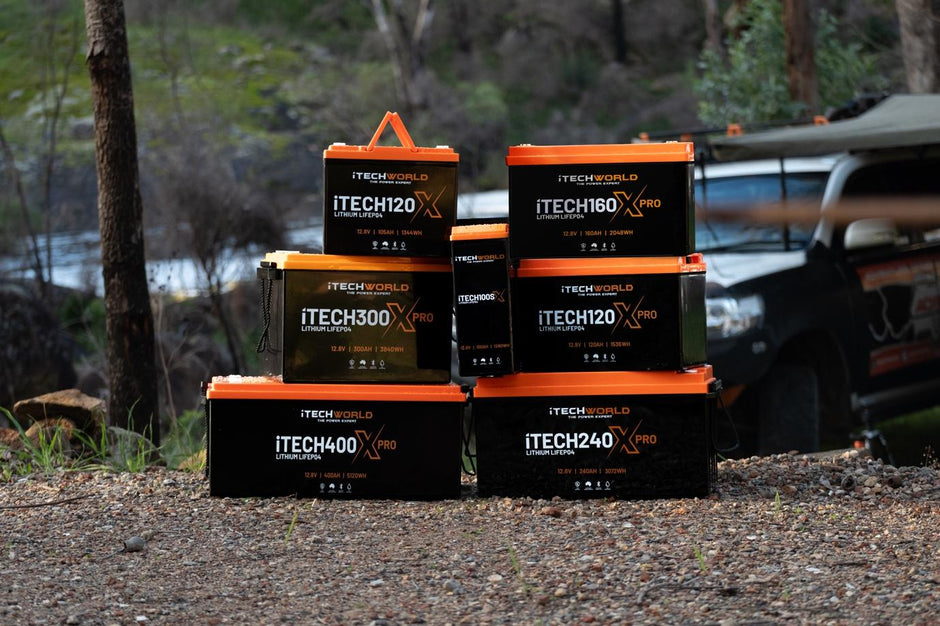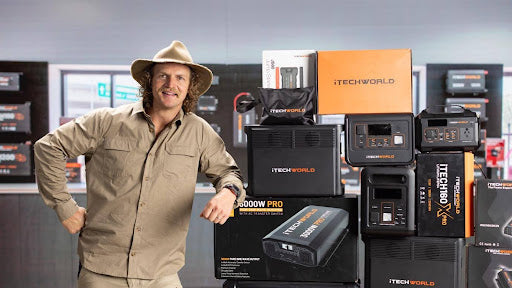YouTube Peter Zalums or Griniflix reviewed the latest power station from iTechworld, the PS2000. Looking into the key features, Peter also goes into detail on the Uninterruptible Power Supply (UPS) which is a great feature to use when you are connecting you power station to the wall and your devices at the same time.
Watch the PS2000 review video
Read the transcript
Hi, it's Peter Zelms from Grinifix Adventure. Today it's all about power stations. Portable power. iTechworld has brought out a new power station, and I have got myself one. It's going to complement my other iTechworld power sessions that I have that I use for my adventure travel, for my four-wheel drives, but we have another one. Here it is. Here, it's bigger. It's a new power station, but iTechworld is called the PS2000, and there's one big fundamental difference. Actually, there's two big fundamental differences between this and all the other power stations that iTechworld has released. Yes, it's larger capacity, but the other big thing that's different about this is that it's a UPS - an uninterruptible power supply that has some big advantages in addition to portable power. Let's talk about that.
The existing ones that I have are the 1300P, the 500P, and also I've got this power station, just a little box here. It actually does two things. It runs portable power when I need it for photography and for running my car fridge, but it also starts the car in the event that I have a flat battery main starter battery. This can actually start the car, my big V8 Diesel. Yep, that will start the car. Lithium power stations have been a real game changer for me for adventure travel.
One of the big advantages of lithium power stations in adventure travel is in cooking. I've been able to eliminate gas and method burners and everything with a live flame by actually using induction cooking. So, that's made camping much safer. It means that in extreme conditions, you can literally be cooking inside your tent, for example, on an induction cooker, and boiling up some water in a small 12-volt kettle or something like that or from the power station.
The 1300P is probably the ideal power station when it comes to your four-wheel drive. It has a capacity of 1,300 watts, which is good for induction cooking. You can get induction cooker plates, for example, that use 1200 watts, so that's perfect, and there are other devices that run below that 1300-watt capacity. When you have electrical power or power stations, you've got to sort of compare the type of devices that you want to run and what their rating is compared to the capacity of your unit. So, I find the 1300 watts to be perfect for my adventure travel, my four-wheel driving. The other one that I have is the 500-watt, the 500P, and that is great for charging up my computer or running my computer, my laptop for video editing, and for my photography or charging up all my cameras, providing lighting. The capacity isn't large enough to run an large induction cooker, but for everything else, it's perfect.
So, if you're someone who needs a reliable power source for critical devices like medical equipment, security systems, or servers, then having an uninterruptible power supply can be a lifesaver.
The PS2000 is a 2000-watt power station, which means it has double the capacity of the 1300p. This makes it great for running higher wattage devices like power tools or larger appliances. It also has four AC outlets and two USB-C ports, as well as two DC ports for charging your car batteries or other 12-volt devices.
One of the standout features of the PS2000 is its UPS function. This means that it can provide a seamless backup power supply in the event of a power outage. This is especially useful if you're running critical devices like servers that need to stay up and running 24/7. With the PS2000, you won't have to worry about losing power and potentially losing data or compromising security.
The PS2000 also has a built-in MPPT solar charge controller, which means you can charge it using solar panels. This is perfect for off-grid adventures or as a backup power source during emergencies.
Overall, the PS2000 is a fantastic addition to the iTechworld lineup of power stations. Its UPS function and high capacity make it a great choice for anyone who needs a reliable power source for critical devices or larger appliances. And with its solar charging capabilities, it's also a great choice for off-grid adventures or emergency preparedness.
Of course, this will run my fridge. This will run my camper fridge. This will actually run the domestic fridge as well, my upright fridge freezer here. And this smaller unit here, the jump starter, which starts your car, this will run your fridge, your car fridge, your lights, will charge your batteries, or even be able to run your computer system as well, your laptop computer.
So, why have a larger unit and particularly this one here, the uninterruptible power supply? Lets take a closer look at that and we'll be able to see how we can use that both in a camping environment for my four-wheel drive adventure travel for my photography requirements, charging my devices whatever, but now this becomes a domestic unit as well. How can this be something that's really important to run your power in your household for critical items, fridge, the refrigerator and your internet, your computer systems, anything that needs to run all the time, and if there's a power failure that takes over, let's unbox this and have a look.
Instructions that always helps, a bag of goodies, cables basically or need those.
Oh right, okay, well, I guess this is an unboxing so I can just go through some overall features of the PS2000, and then we'll be doing some more testing in the camping environment but also in the domestic environment which will be in the subsequent video.
So just from an operation point of view, there's I noticed some things straight away, and that's with this accessory pack with the other power stations, you've got a power cord with connect up for charging AC, but then you've also got a Transformer as well, which just takes up more space as well. All that is actually incorporated into the box, which means now all you have is a power cord when you want to charge from the mains power, and you just connect it up to the power station.
On one side you've got the inputs and on the other side here you've got the outputs. You've got three outputs here, it's an AC outputs one, two, three, 240 volts. So that's that side there, and then on the other side, we've got the input side, and then you can just plug in your AC there just like that, and then you can actually plug it into the wall as well.
To turn it on, we've just got a power button there, and all I have to do is just press that for a couple of seconds, and then the screen will come on, and there's a whole bunch of useful information on the screen. You've got the input power that's coming in, and also you've got the output power. Being an uninterruptible power supply means you can actually connect it up to your Mains power and also be using power from the output as well.
The great advantage of the uninterruptible power supply means when you connect it up to your power, and you connect another 240 volt to the output, it's actually bypassing the battery here and goes and takes the power straight from the mains power, and if for some reason, the mains power fails, then the battery instantly kicks in and continues to provide 240 volts power.
Now, as an uninterruptible power supply, this becomes really important for people with country houses. I have a friend who lives in the city but also has a country farm, and one of their biggest gripes is that the power supply to their Farm is unreliable. Now living in two locations means they've got an operating fridge, and they're also operating a separate freezer, and if the power goes off for a day or two days, which it does from time to time, everything in their freezer gets ruined and destroyed, and they could lose a thousand dollars a time in spoiled food produce, meats, and whatnot. If they had an uninterruptible power supply like this, with their fridges and freezers connected, it means that during those situations, it would kick in and maintain the temperature in the fridges. You can imagine if that happens three times, it basically pays for the power station. That's the huge advantage of the UPS, right? So, that's power in, power out. It shows you the capacity and how much power is left in the capacity. It gives an estimate of how many hours of operation you have. The display maxes out at 99 hours. If you're not drawing much power, it's going to run much longer than 99 hours.
Anyway, we've got the 240-volt output there, but then we have all the 12-volt outputs here. We've got a whole bunch of outputs, including USB outputs and USBC outputs. There are four USB outputs and USBC outputs have a capacity of 100 Watts. That means I can actually use a USB cable and connect my MacBook Pro directly to it and it will charge at full capacity while I'm using my MacBook Pro for video editing, etc. We've also got a 12-volt 25-amp output, a 12-volt 3-amp output, and another one of the same type, and a cigarette lighter output that's a 12-volt 10-amp output.
That's all the 12-volt outputs, and then we have a light as well. If you press it once, it just turns on the light in an emergency. If you press it again, then it sends out an SOS signal and that can operate continuously until you actually turn it off. Three short dashes, three long dashes, three short dashes = SOS. If you press it again, then it just goes into a strobe. If you have a flat tire at nighttime, you're changing a flat tire, and then at least you can bring out your power station and have that strobe operating. At least it's flashing, and any cars coming along the road will be aware that there's something going on, so it's good. Then just press it again, and it actually turns it off.
It has all sorts of protection circuits in it so that if you use too much power like running your kettle, it will switch it off. If it's a short circuit, it will switch it off. It's basically foolproof. One of the devices is in here, so that's your 240 volts, and we've got a cigarette lighter type connector. If you're just running this in your car and the only power source you have in your car is the normal 12-volt cigarette lighter type connector, then you just plug that in and then this is your mini Anderson plug. You just basically connect that in there and put that in your cigarette lighter, then that will charge the unit as well.
You do have another cable in here, which is an important one. If you want to charge your power station using solar blankets or a solar panel, then this connects to your solar panel, and then this connects to your mini Anderson plug here. The important thing to note is that you don't need any controllers. You basically connect this straight to your solar panel because all the controllers are inside the unit here.
Basically, you can connect this straight to your solar panel because all the controllers are inside the unit. iTechworld has a number of solar blankets - foldable, portable solar blankets - with a capacity of 100 watts, 200 watts, or 300 watts, so you can just connect them straight to the blanket. The maximum capacity coming in is about 500 watts, so if you have 500 watts coming in at 12 volts, then you can charge this up in four hours. If you are charging from the wall, this can charge at around a thousand watts per hour, which means you can actually charge it up within two hours. I'm impressed with this - I can't wait to test it out here in the house running the fridge, etc.
On the other hand, if you're looking for a device with a longer battery life, you might consider a laptop with a larger battery or one that has a more energy-efficient processor. It's also worth noting that you can conserve your laptop's battery by adjusting the brightness of your screen, closing any unnecessary programs, and disabling any features that you're not using.
In addition to battery life, there are other factors to consider when choosing a laptop. For example, you'll want to think about the size and weight of the device, as well as its performance and features. If you're planning to use your laptop for video editing or other demanding tasks, you'll likely need a device with a powerful processor and dedicated graphics card. On the other hand, if you're just planning to use your laptop for basic tasks like web browsing and word processing, you may not need such high-end features.
Another factor to consider is the operating system. Windows is the most popular operating system for laptops, but there are also many laptops that run on macOS or Linux. Each operating system has its own advantages and disadvantages, so it's worth doing some research to figure out which one is right for you.
Finally, you'll want to think about your budget. Laptops can range in price from a few hundred dollars to several thousand dollars, so it's important to figure out how much you're willing to spend before you start shopping. Keep in mind that while a more expensive laptop may have more features and better performance, it may not be necessary for your needs.
In conclusion, there are many factors to consider when choosing a laptop, from battery life to performance to price. By doing some research and thinking carefully about your needs and budget, you can find a device that's perfect for you.

